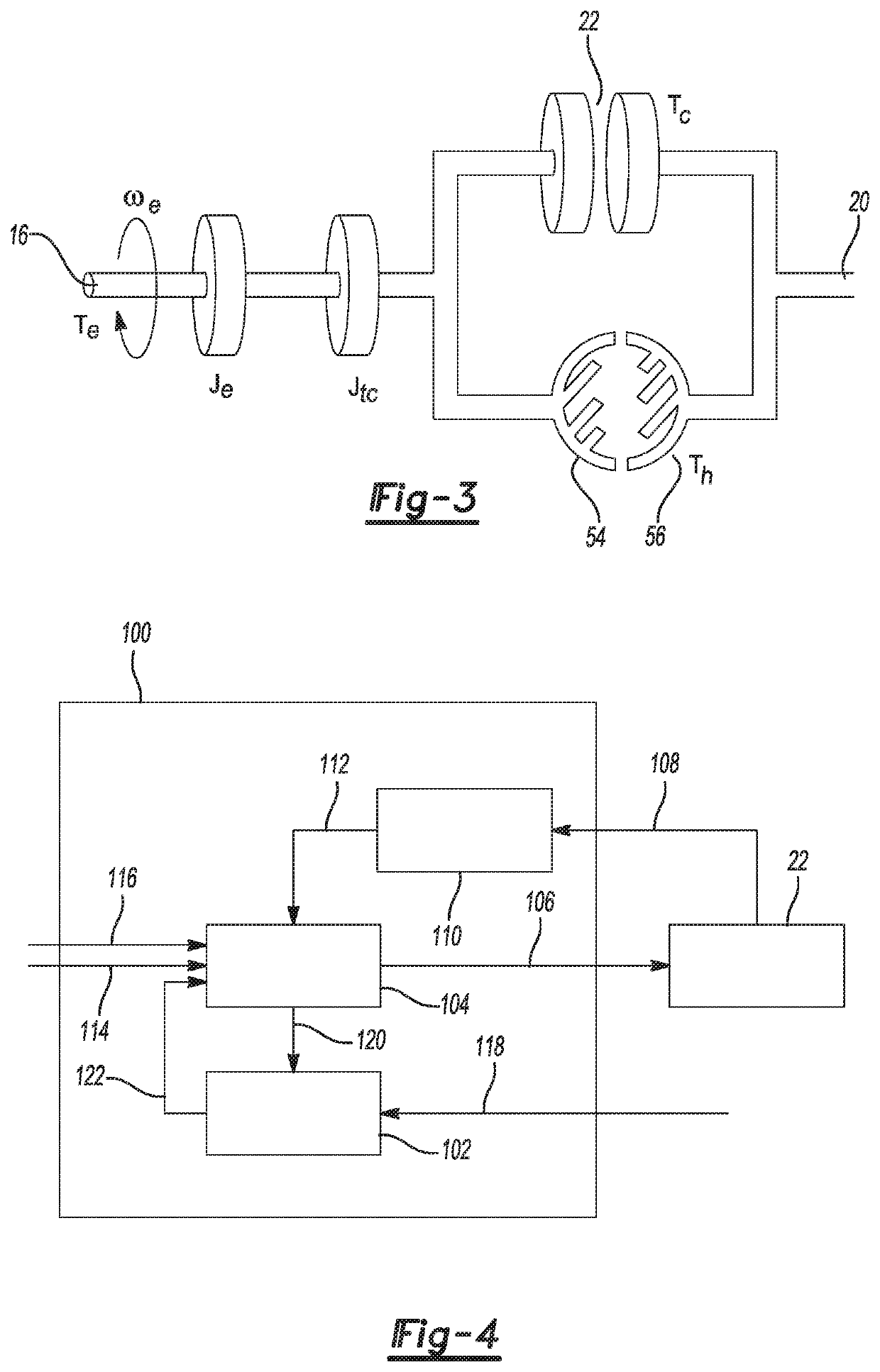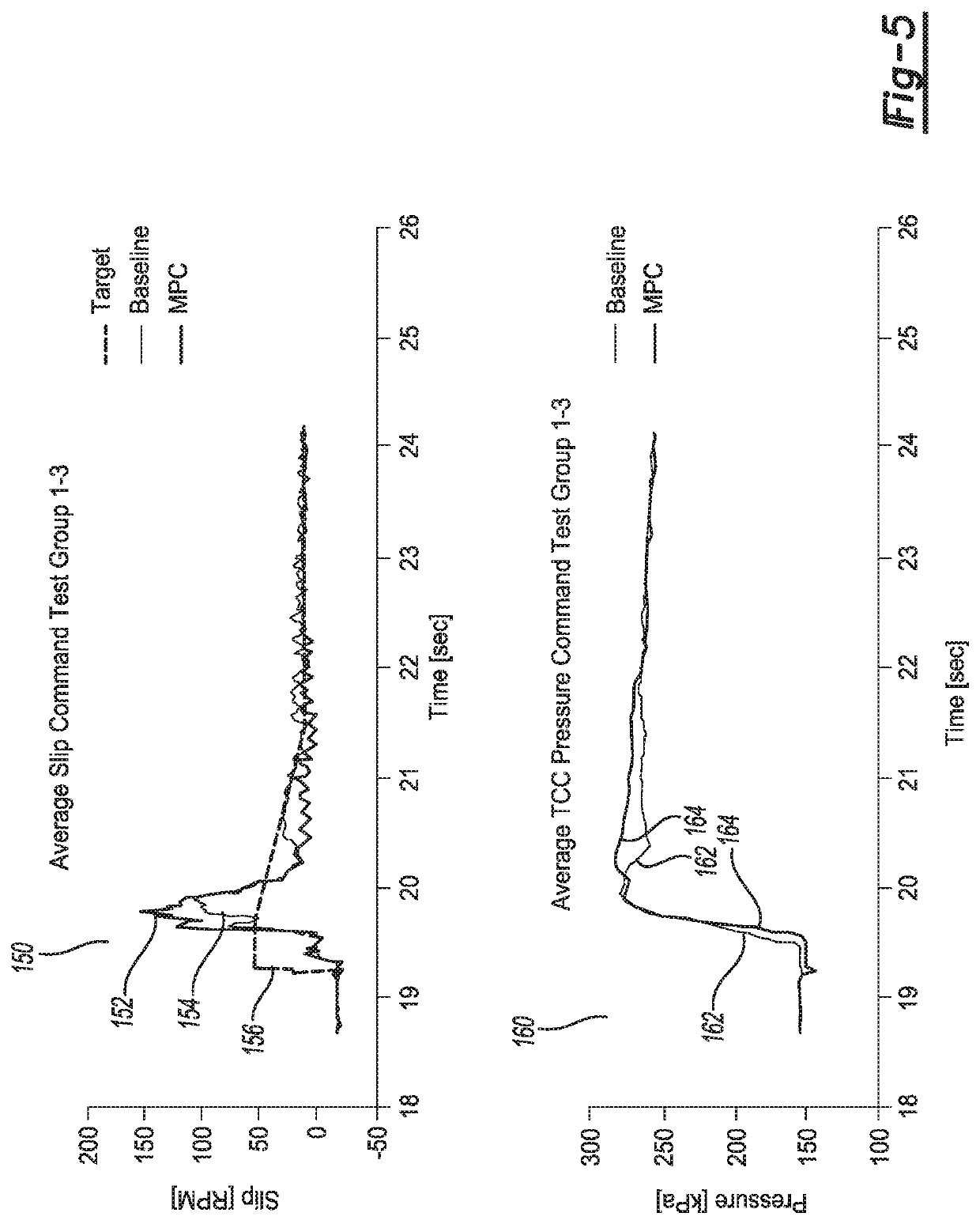Model predictive control of torque converter clutch slip
a technology of torque converter and clutch, applied in the direction of gearing control, gearing elements, gearing, etc., can solve the problems of inability to lock tcc, inability to control and inability to detect the slip of the clutch
- Summary
- Abstract
- Description
- Claims
- Application Information
AI Technical Summary
Benefits of technology
Problems solved by technology
Method used
Image
Examples
second embodiment
[0052]In an aspect of this second embodiment, a clutch plant model relates the clutch torque Tc to engine torque Te and to a commanded torque actuation pressure PTcc. In the following discussion, to simplify the notation by reducing the number of subscript levels the variable name CltTrq is used to represent the clutch torque Tc.
[0053]For this second exemplary embodiment, the input and output terms in the discrete state space model may be represented as:
u=[PTcc]
y=CltTrq
Where PTcc represents TCC clutch activation pressure and CltTrq represents TCC clutch torque.
[0054]For this second exemplary embodiment, an exemplary cost function may include clutch torque error, TCC input pressure rate of change, and TCC input reference pressure error integrals. The cost function may be expressed as:
min∑k=0N-1WCltTrq(CltTrqk+1-CltTrqref,k+1)2+WΔPtcc(ΔPtcc,k)2+WPtccRef(Ptcc,k-Ptcc-ref,k)2
where:
ΔPtcc,kPtcc,k−Ptcc,k−1
subject to the constraints:
Ptcc,min,k≤Ptcc,k≤Ptcc,max,k k=0, 1, . . . , N−1
CltTrqmin,...
third embodiment
[0055]In a third exemplary embodiment, again with reference to FIG. 4, the plant model 102 is a nonlinear model of a TCC described by a linear system with nonlinear disturbances including engine torque, nonlinear part of hydraulic torque, and shaft torsional vibrations. In an aspect of this third embodiment, hydraulic torque in the operating range of interest is approximated by a second order polynomial of slip; i.e. Th≈a(slip)+b(slip)2. In this embodiment, the proposed control signal 120 is a proposed pressure command to the TCC model 102, and the predicted plant response 122 is a predicted slip level. The additional plant model inputs 118 include a reported engine torque signal, such as reported by an engine control module (ECM). The additional plant model inputs 118 also include a hydraulic torque signal. The desired operating point 114 represents a desired TCC slip level. The additional controller input signal 116 represents engine torque. The commanded control output signal 106...
PUM
 Login to View More
Login to View More Abstract
Description
Claims
Application Information
 Login to View More
Login to View More - R&D
- Intellectual Property
- Life Sciences
- Materials
- Tech Scout
- Unparalleled Data Quality
- Higher Quality Content
- 60% Fewer Hallucinations
Browse by: Latest US Patents, China's latest patents, Technical Efficacy Thesaurus, Application Domain, Technology Topic, Popular Technical Reports.
© 2025 PatSnap. All rights reserved.Legal|Privacy policy|Modern Slavery Act Transparency Statement|Sitemap|About US| Contact US: help@patsnap.com



